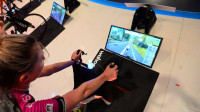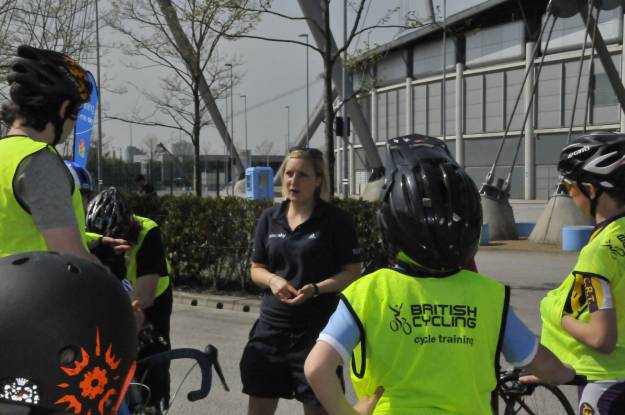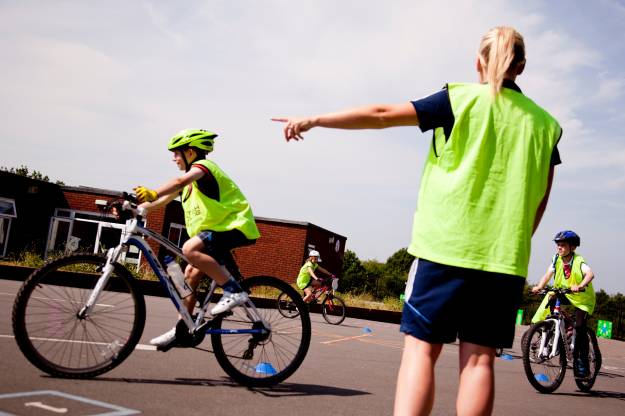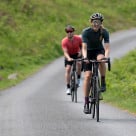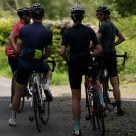Bitesize Bikeability: Part 4: On-Road Positioning
Posted: 12th January 2011 | Source: British Cycling Cycle Training
Bikeability is Cycling Proficiency for the 21st century, teaching the skills to ride confidently and safely on today's roads. In this series of articles we'll look at some of the key concepts introduced on a Bikeability course, and show you some of the resources used on our National Standard Instructor Training Courses. These articles are not intended to replace Bikeability training, but hopefully will give you a taste of what might be covered on a course.
How to Identify Appropriate On-Road Positioning
Cyclists are safest when they can easily see and be seen. Adopting a safe road position can also allow the cyclist a safety zone in which to manoeuvre in the event of a potential accident. By using positioning as a tool to help drivers understand what they are about to do next, the cyclist can also affect driver behaviour, and discourage drivers from performing potentially dangerous manoeuvres.
It is important to remember these key points:
- - know which side of the road to ride on
- - ride so as to see and be seen
- - ride predictably
- - identify what vehicle movements pose potential hazards
- - show how road position can affect driver behaviour
The two road positions to remember are the primary and secondary positions, which are both equally useful and should be applied at the appropriate time.
The primary road position refers to the general flow of traffic and the secondary road position refers to the normal riding position of a cyclist.

Primary Road Position
Understanding Primary Road Position
The primary road position is that of the general flow of traffic (ie in the centre of the lane). Contrary to what inexperienced cyclists may think, this is where they are often safer, as it is where they can most easily see and be seen. Trainees should be encouraged to think like a driver of a vehicle, and if in doubt position themselves where a vehicle would be.
Riding in the primary position is sometimes called taking the lane as the cyclist takes the position normally taken by the motorist, who is thus prevented from attempting to overtake.
When riding in the primary position, trainees should travel at a reasonable speed, as part of the traffic flow. If, however, traffic is building up behind them and the road ahead is clear, they may wish to move to the secondary position to avoid obstructing other road-users unnecessarily.
It is important to:
- - know which side of the road to ride on
- - recognise the road edge/kerb and centre lines
- - continue to monitor other road users in front and over their right shoulder
- - identify situations where the primary position is appropriate
- - move into the primary position in a controlled manner
- - demonstrate that the primary position is the centre of the lane
- - monitor the road for vehicles stopping, the road narrowing or other potential hazards
- - cover the brake levers at all times.
Understanding Secondary Road Position
The secondary road position (roughly 1 metre to the left of the traffic flow and not less than 0.5 metres to the edge of the road) may be appropriate if the road is wide enough to allow safe overtaking, and the rider’s safety is not reduced by riding in this position.
The correct choice of road position can be used to help riders affect driver behaviour, in order to help avoid collisions with other road users, or to avoid them having to brake suddenly. The secondary position is a useful position on most minor roads where there are few parked vehicles on the carriageway, and is particularly appealing to beginners as it leaves them closer to the perceived safety of the pavement.
It is important to:
- - know which side of the road to ride on
- - recognise the road edge/kerb and centre lines
- - use the see and be seen principle and show how this relates to road position
- - identify situations where the secondary position is appropriate
- - establish the minimum distance to be maintained from the kerb for safety reasons
- - ride a consistent path in a controlled manner
- - continue to monitor other road users in front and over their right shoulder
- - monitor the road surface for potential hazards
- - look ahead along the road for vehicles stopping, the road narrowing or other potential hazards
- - cover the brake levers at all times.

Further Reading
Click here to read - Bitesize Bikeability: Part 1: Side Roads and Parked Cars
Click here to read - Bitesize Bikeability: Part 2: Left Turns
Click here to read - Bitesize Bikeability: Part 3: Communication
More Information
The best way to improve your on road cycling skills is through completing a Bikeability course. These are available free to most young people through schools, and in certain areas training for adults is also free.
To find your local Bikeability scheme visit www.bikeability.org.uk
If you would like to train as a Cycle Training Instructor to deliver Bikeability courses more information on British Cycling's Instructor courses is available here.
If there is an on road skill you'd like us to look at in more detail in a future article please contact cycletraining@britishcycling.org.uk with your suggestions.


